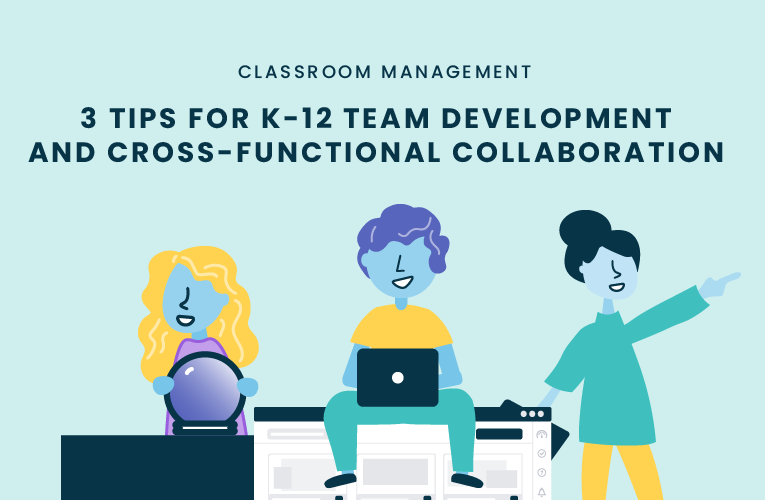Cross-functional collaboration and K-12 team development are one of the most important parts of successful technology integration on both the school and district levels.
Recently we spoke with Elizabeth Walhof, Assistant Principal at Air Academy High School, to find out how to make cross-functional collaboration and K-12 team development most effective. Elizabeth Walhof has experience at the district level and at the school level, so she had a unique and thought out perspective on how to make collaboration effective between school and district teams.
K-12 team development is a two-way process that takes place at both the district and school levels. To make collaboration and team development most effective, its critical to proactively think about challenges and have supporting processes in place. Here are 3 tips for K-12 team development and cross-functional collaboration.
3 Tips for K-12 Team Development and Cross-Functional Collaboration
Creating cross-functional teams that communicate and collaborate can be challenging. Elizabeth Walhof explained that there are three key skills and tips to overcoming these challenges and making K-12 team development and collaboration successful. Overcoming cross-functional silos can be achieved by using common projects and developing cross-team relationships, empathy development and concise communication, and daily huddles for consistent collaboration.
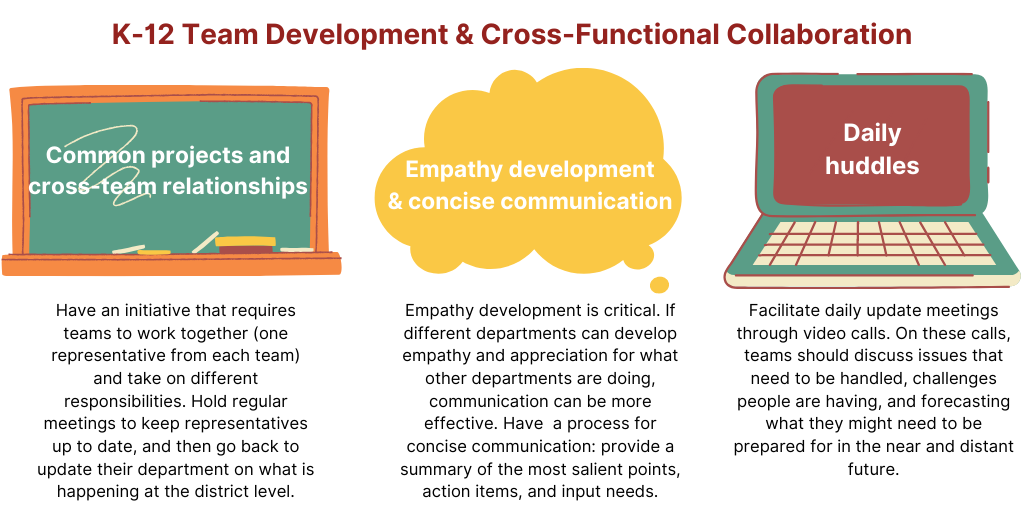
1. Common projects and cross-team relationships
One of the biggest challenges of K-12 team development at the district and school levels is that different departments within larger districts can often become siloed and isolated. Whether physical silos due to teams being dispersed between different buildings or metaphorical silos due to workload, these silos can prevent strong cross-team relationships from developing.
Elizabeth suggests implementing common projects to organically foster cross-team relationships. After K-12 team development occurs, have an initiative that requires teams to work successfully together (one representative from each team) and take on different responsibilities. Hold regular meetings to keep these representatives up to date, and then that representative goes back to update their larger department on what is happening at the district level. All departments don’t need to meet all the time, rather have an individual member from each department be a liaison between departments and district-level teams.

2. Empathy development and concise communication skills
During her time at the district level, Elizabeth found that she had a unique empathy for those at the school level, and vice versa when she returned to the school level after working at the district level. She explained that in order to be successful with K-12 team development at both levels, empathy development is critical. If different departments can develop empathy and an appreciation for what other departments are doing, communication can be more effective, timely, and fresh.
Regarding communication, Elizabeth also shared that an underdeveloped skill she has noticed is for people to be able to provide concise communication. If representatives from these K-12 teams can provide a quick summary of the most salient points, action items, and where input is needed, it makes that content more digestible for the larger department and team. A critical part of K-12 team development is having a protocol to help guide people on how to communicate this way.
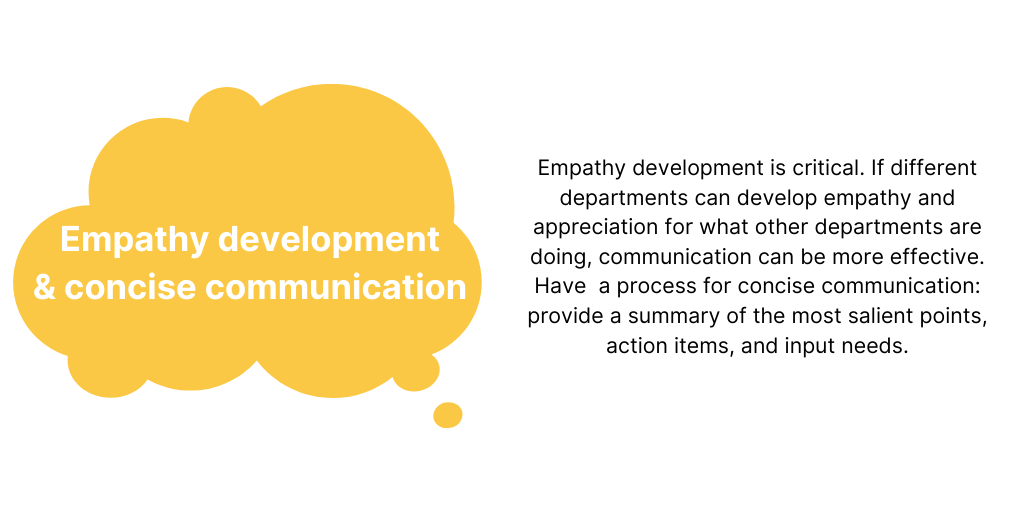
3. Daily huddles to support K-12 team development
Having representatives from departments and teams travel to the central district office is effective for important and infrequent meetings, but not sustainable for smaller, more frequent meetings. Elizabeth suggests implementing a daily huddle for anyone connected to these teams to make sure everyone is updated and on the same page.
In her experience, the Instructional “house” and Technical “house” are both connected to different teams at the district level, creating additional silos. So, she suggests facilitating daily update meetings through video calls. On these calls, teams should discuss issues that need to be handled, challenges people are having, and forecasting what they might need to be prepared for in the near and distant future.
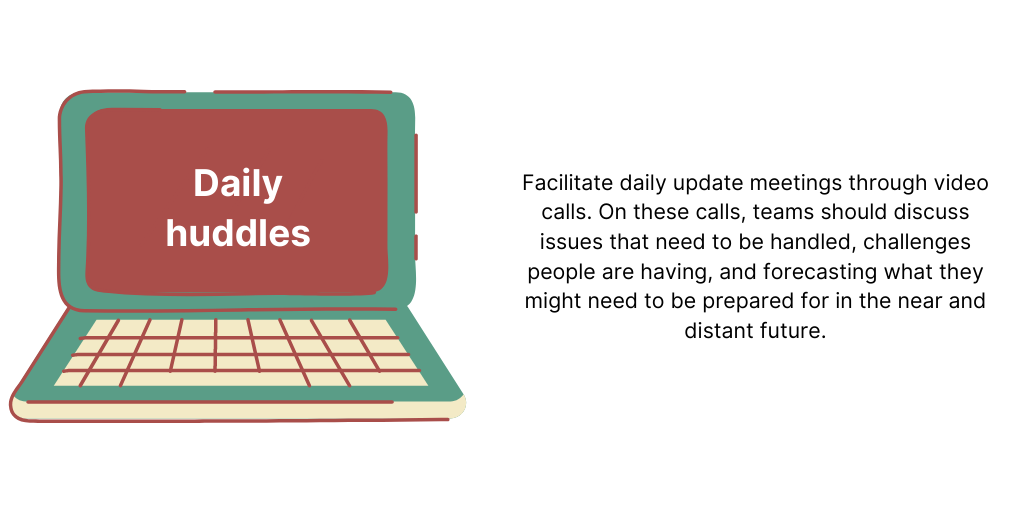
Successful K-12 team development and cross-functional collaboration are critical components of any K-12 technology integration plan, especially during times of e-Learning (also known as remote learning). If these processes are in place during the normal functioning time, then it will be a smoother transition to remote learning environments when they present themselves. Effective communication and collaboration are the glue that holds K-12 team development in place.
Listen to our full conversation with Elizabeth Walhof
On this episode of Tackling Tech Podcast, powered by Dyknow, Brett McGrath talks with Elizabeth Walhof, Assistant Principle at the Air Academy High School in Colorado Springs. The two discuss the current state of the world amid the COVID-19 pandemic and how her school district is moving forward. Elizabeth had a nontraditional career path from a high school teacher, to working at the District Level, and now back at the school level as an Assistant Principal. She shares what she’s learned along the way and advises on how to make meetings and communication more efficient.
Start teaching confidently with Dyknow for free!
Latest blog articles
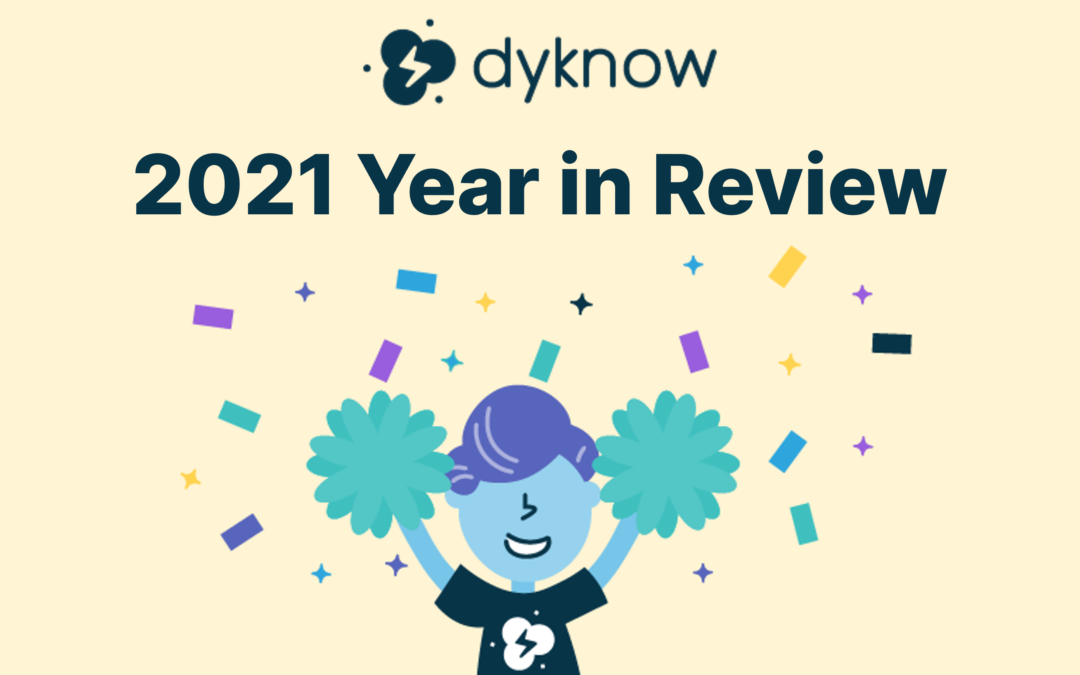
Dyknow 2021 Year In Review
In addition to web browser updates and bug fixes, Dyknow released several major product updates, new features and enhancements. Check out Dyknow’s 2021 Year in Review!
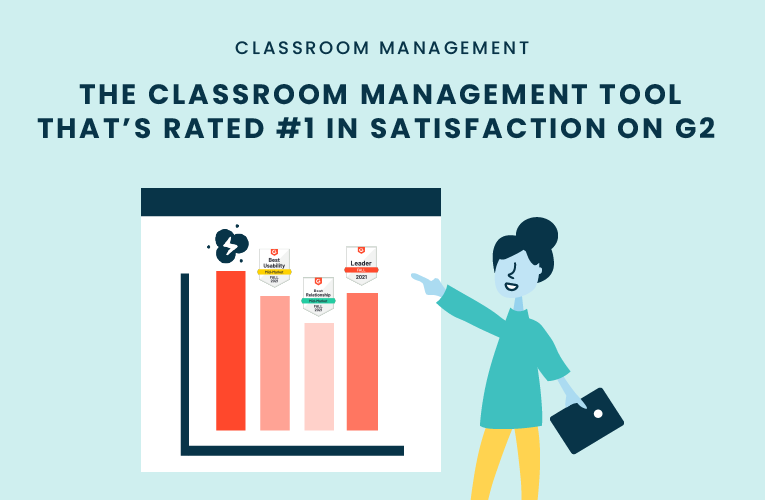
The Classroom Management Tool that’s Rated #1 in Satisfaction on G2
K-12 Administrators across the world trust G2 as the #1 platform to find, research, and choose EdTech tools that solve the most pressing problems their teachers are experiencing. In G2's Fall 2021 Reports, Dyknow was once again rated #1 in overall Satisfaction out of...

Bringing Diversity and EdTech to the English Classroom
On this episode of Tackling Tech, Tierra Leustig interviews Scott Bayer about being an anti-racist teacher, diversifying reading lists, creating inclusive learning environments, and leveraging ed-tech in non-technical ELA classrooms. Scott Bayer is a High School...

